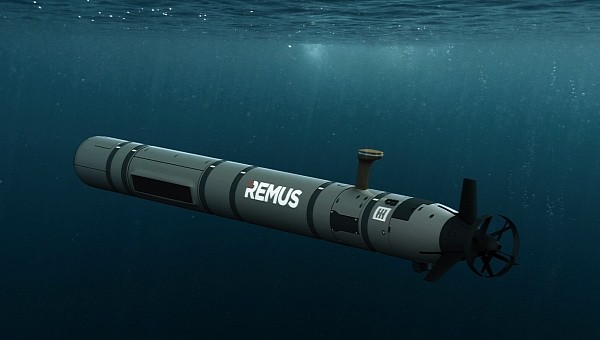HII added a new submarine model to its fleet of Remus UUVs (unmanned underwater vehicles), a multi-mission-capable marine robot meant to go the distance.
HII stands for Huntington Ingalls Industries and advertises itself as America largest shipbuilder, with over 135 years of experience in the field. The company develops a variety of advanced unmanned solutions, not just for defense but also for commercial use, marine research, and more.
HII’s Remus UUVs are untethered, autonomous marine robots that are suitable for various applications. They currently come in four models: Remus 100, Remus 300, Remus 6000, and the recently unveiled Remus 620. The latter is a medium-class UUV, which, according to the manufacturer, provides “unmatched mission capabilities for mine countermeasures, hydrographic surveys, intelligence collection, surveillance and electronic warfare”.
As explained by HII, the new Remus 620 is built on the Remus 300 platform, with that particular UUV being a flexible, small-class, portable robotic underwater vehicle that can be carried by two people and offers a modular design. Back to our Remus 620, this model also boasts a modular, open architecture design meant to facilitate seamless payload integration.
Without payload and with one battery, the UUV measures 123” (3.1 m) and weighs 490 lb (222 kg). The underwater, autonomous robot is packed with modern electronics, navigation, and communication systems. It has a depth rating of 1,969 ft (600 m).
HII boasts of the Remus 620 being the longest-reaching UUV in its class, with a battery life of up to 110 hours and a range of 275 nautical miles (509 km). Those specs apply when the UUV is equipped with 3 batteries with a capacity of 28.9 kWh, which also increases the vehicle’s weight.
The Remus 620 can be deployed from submarines, boats (manned or unmanned), amphibious ships, or helicopters. It can also be used to launch and operate other unmanned vehicles or payloads from under the water.
HII’s Remus UUVs are untethered, autonomous marine robots that are suitable for various applications. They currently come in four models: Remus 100, Remus 300, Remus 6000, and the recently unveiled Remus 620. The latter is a medium-class UUV, which, according to the manufacturer, provides “unmatched mission capabilities for mine countermeasures, hydrographic surveys, intelligence collection, surveillance and electronic warfare”.
As explained by HII, the new Remus 620 is built on the Remus 300 platform, with that particular UUV being a flexible, small-class, portable robotic underwater vehicle that can be carried by two people and offers a modular design. Back to our Remus 620, this model also boasts a modular, open architecture design meant to facilitate seamless payload integration.
Without payload and with one battery, the UUV measures 123” (3.1 m) and weighs 490 lb (222 kg). The underwater, autonomous robot is packed with modern electronics, navigation, and communication systems. It has a depth rating of 1,969 ft (600 m).
HII boasts of the Remus 620 being the longest-reaching UUV in its class, with a battery life of up to 110 hours and a range of 275 nautical miles (509 km). Those specs apply when the UUV is equipped with 3 batteries with a capacity of 28.9 kWh, which also increases the vehicle’s weight.
The Remus 620 can be deployed from submarines, boats (manned or unmanned), amphibious ships, or helicopters. It can also be used to launch and operate other unmanned vehicles or payloads from under the water.





